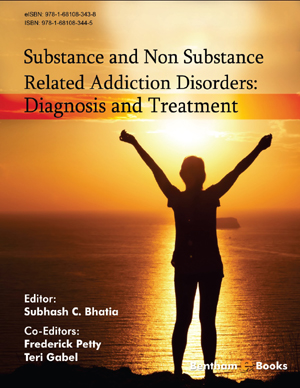Abstract
Sedative Hypnotic Agents (SHAs) are prescribed across several medical disciplines, however, these carry a risk of addiction in small percentage of patients. SHA use for more than a month can result in tolerance and pharmacological dependence. This often requires dose escalation during the first 10-12 weeks of treatment . This pharmacological dependence should be distinguished from SHA use disorder. In this chapter we discuss the factors associated with risk and risk mitigation for SHA use disorder. Use of lowest possible effective dose for shorter period of time with close monitoring a valuable strategy to prevent addiction. Sudden SHA withdrawal specially from barbiturates may be fatal. We discuss the safe strategy for acute withdrawal by converting the drug of addiction to equivalent dose of a long halflife benzodiazepine or barbiturate. Stabilizing on that drug dose and gradually tapering from that. We also suggest treatment with adjunctive medications for comorbid psychiatric disorders. We conclude this chapter with a brief discussion of psychosocial strategies to promote abstinence and recovery.
Keywords: Barbiturates, Benzodiazepines, Benzodiazepine daily equivalents, Dependence, Pharmacological dependence, Sedative Hypnotic use disorders, Withdrawal.






















